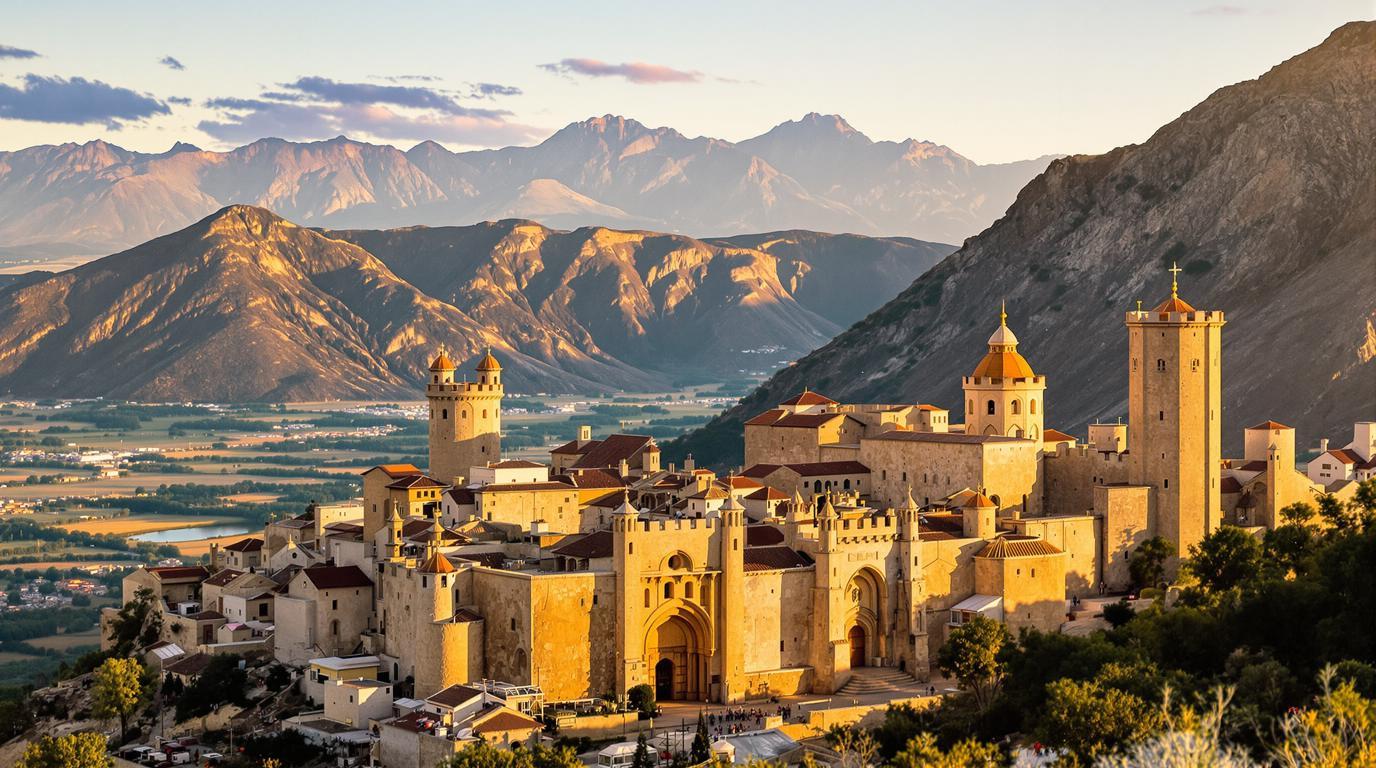Pradelles sits like a medieval crown atop the Haute-Loire landscape, commanding views that have captivated travelers for centuries. This 11th-century hilltop village—officially recognized as one of “Les Plus Beaux Villages de France” (Most Beautiful Villages of France)—offers a remarkable journey through time at 3,800 feet above sea level. While only 600 residents call it home year-round, this stone sentinel guarding the historic Regordane Way reveals treasures few international visitors ever discover.
A balcony overlooking volcanic wonders
Known as the “balcony of the South,” Pradelles commands breathtaking panoramic views across the Allier Valley and Lake Naussac. On clear days, visitors gazing from the Calvary Garden orientation table witness a tapestry of volcanic peaks, deep valleys, and the distant shimmer of alpine lakes. The village’s strategic position between the Cévennes and Auvergne regions once made it a crucial defensive outpost—today, it makes it a photographer’s paradise.
“The light here changes everything. At sunset, our golden stone buildings catch fire with color in a way that reminds many visitors of Provence’s hilltop villages, but with far fewer tourists,” explains Marie Dubois, local historian.
Medieval gates and sacred miracles
Pradelles preserves its medieval soul through two magnificent 13th-century gates—Porte de la Verdette and Porte du Besset—that once protected its inhabitants. The ancient stone houses, particularly the enigmatic Templer house, seem frozen in time. But the village’s spiritual heart beats within the Chapel of Notre-Dame, built in 1613 and home to a miraculous statue of the Virgin Mary discovered buried nearby.
Every August 15th, locals carry this revered statue in procession through cobblestone streets, continuing a tradition that survived even the French Revolution, when the original statue was destroyed but later restored in 1802.
The literary path less traveled
Literary enthusiasts will delight in walking the same paths as Robert Louis Stevenson, who passed through with his donkey Modestine in 1878. The village marks a significant stop on the famous GR 70 hiking trail (Stevenson Trail) that traces the author’s journey. Like Corsica’s hidden villages, Pradelles reveals itself slowly to those willing to explore on foot.
A railway adventure like no other
Pradelles offers one of France’s most unusual attractions: the VeloRail. These pedal-powered railbikes allow visitors to traverse old railway tracks alongside the valley, passing through tunnels and viaducts with spectacular views over Plan de Naussac lake. Unlike the secret beaches of coastal towns, these hidden railway passages offer an inland adventure rarely experienced by international travelers.
“Many visitors come for the hiking but stay for the VeloRail. It’s completely different from anything they’ve experienced before—like traveling through time on the old Transcévenol railway,” shares Jean Moreau, local tour guide.
Horse heritage and rural traditions
The Musée du Cheval Trait (Draft Horse Museum) celebrates the powerful working horses that shaped rural French life for centuries. This living museum offers a glimpse into traditional farming methods and the magnificent breeds that once powered agriculture throughout the region—a cultural treasure as significant as Asia’s ancient religious festivals but focused on French rural heritage.
When to discover this hidden gem
While summer brings perfect hiking weather and bustling village markets, visiting in May or September offers milder temperatures and fewer crowds. Winter transforms Pradelles into a magical alpine retreat, with stone buildings dusted in snow and cozy restaurants serving hearty Auvergne specialties like aligot (cheese-enriched mashed potatoes).
For travelers seeking the authentic France beyond crowded tourist destinations, Pradelles delivers what Thailand’s secret beaches offer seaside—an unspoiled treasure that rewards the curious with breathtaking beauty, living history, and experiences most visitors to France will never know existed.
